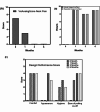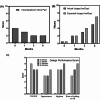Clinical case study on custom 3D printed collars for dropped head syndrome patients
- PMID: 40471434
- PMCID: PMC12139371
- DOI: 10.1186/s41205-025-00274-x
Clinical case study on custom 3D printed collars for dropped head syndrome patients
Abstract
Background: Dropped Head Syndrome (DHS) is a neurological condition characterized by severe head and neck muscle atrophy, leading to difficulties in maintaining a straight gaze and experiencing severe neck pain during daily activities. Standard off-the-shelf cervical orthotic devices (Neck Collars) often fail to provide adequate support for patients with DHS. This feasibility study aimed to develop and implement a novel feedback-incorporated workflow for creating personalized 3D printed (Powder Bed Fusion) cervical orthotic devices for six DHS patients with varying pathologies.
Case presentation: A tailored workflow was devised and executed to produce bespoke 3D printed cervical orthotic devices for 6 DHS patients. The effectiveness of the collars in supporting patients during activities and reducing neck pain was assessed quantitatively and qualitatively using validated patient support questionnaires, Neck Disability Index, Visual Analog Score for Neck Pain, Global Cervical Angles (GCA), and Vertical Chin Brow Angles (VCBA) before and after intervention. Various clinical and design parameters were analysed to evaluate the collars' efficacy in supporting patients and reducing neck pain. Patients exhibited an increase in GCA and a decrease in VCBA when using the collars as compared to their previous condition without those. The Visual Analog Score for Neck Pain decreased over the 6-month follow-up period, indicating positive implementation of the bespoke collars.
Conclusion: The personalized design and functionality of the 3D printed collars significantly improved patients' quality of life, representing a significant advancement in rehabilitative and supportive healthcare interventions. This pilot study lays the groundwork for further large-scale cohort studies.
Keywords: 3D printing; Case study; Cervical orthotic device; Dropped head syndrome; Neck collar.
© 2025. The Author(s).
Conflict of interest statement
Declarations. Ethics approval and consent to participate: The present study is not within the scope of a clinical trial. The protocol for this feasibility study was approved by the Royal National Orthopaedics Hospital- Research Ethics Committee (REC) under compassionate patient access through Surgical Innovation and New Techniques and Technology committee. All methods were performed in accordance with the relevant guidelines and regulations. All participants provided written informed consent for data collection and processing for publication. Consent for publication: Prior informed consents were obtained from the participants for publication. Competing interests: The authors declare no competing interests.
Figures




Similar articles
-
Cervical immobilization in trauma patients: soft collars better than rigid collars? A systematic review and meta-analysis.Eur Spine J. 2022 Dec;31(12):3378-3391. doi: 10.1007/s00586-022-07405-6. Epub 2022 Oct 1. Eur Spine J. 2022. PMID: 36181555
-
Are Current Survival Prediction Tools Useful When Treating Subsequent Skeletal-related Events From Bone Metastases?Clin Orthop Relat Res. 2024 Sep 1;482(9):1710-1721. doi: 10.1097/CORR.0000000000003030. Epub 2024 Mar 22. Clin Orthop Relat Res. 2024. PMID: 38517402
-
Intravenous magnesium sulphate and sotalol for prevention of atrial fibrillation after coronary artery bypass surgery: a systematic review and economic evaluation.Health Technol Assess. 2008 Jun;12(28):iii-iv, ix-95. doi: 10.3310/hta12280. Health Technol Assess. 2008. PMID: 18547499
-
Physical activity and exercise for chronic pain in adults: an overview of Cochrane Reviews.Cochrane Database Syst Rev. 2017 Apr 24;4(4):CD011279. doi: 10.1002/14651858.CD011279.pub3. Cochrane Database Syst Rev. 2017. PMID: 28436583 Free PMC article.
-
Physical activity and exercise for chronic pain in adults: an overview of Cochrane Reviews.Cochrane Database Syst Rev. 2017 Jan 14;1(1):CD011279. doi: 10.1002/14651858.CD011279.pub2. Cochrane Database Syst Rev. 2017. Update in: Cochrane Database Syst Rev. 2017 Apr 24;4:CD011279. doi: 10.1002/14651858.CD011279.pub3. PMID: 28087891 Free PMC article. Updated.
References
-
- Petheram TG, Hourigan PG, Emran IM, Weatherley CR. Dropped head syndrome: a case series and literature review. Spine (Phila Pa 1976). 2008;33:47–51. - PubMed
-
- Sharan AD, Kaye D, Charles Malveaux WM, Riew KD. Dropped head syndrome: etiology and management. J Am Acad Orthop Surg. 2012;20:766–74. - PubMed
-
- Brodell JD Jr., Sulovari A, Bernstein DN, et al. Dropped head syndrome: an update on etiology and surgical management. JBJS Rev. 2020;8:e0068. - PubMed
Grants and funding
LinkOut - more resources
Full Text Sources
